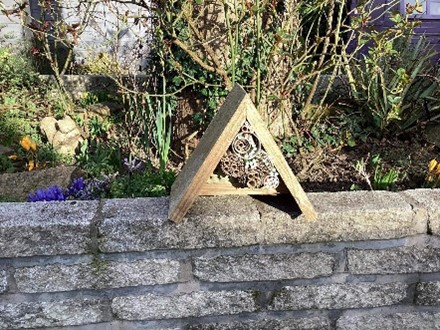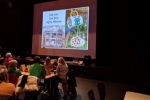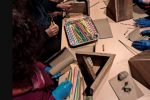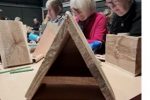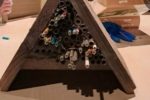Earlier this year The Atkinson hosted a free workshop to make a Solitary Bee Home and talk about the importance of solitary and bumble bees and what we can do to protect them. Over 35 people attended and made their own Bee Home to take away with them.
Why is it important to provide homes/ suitable nesting sites?
Bees are a very diverse group. When we think of bees in the UK, we often think of the social honeybee and bumblebees but there are lots of different lifestyles and nesting habits. Around 275 bee species live in Britain, including just one honeybee and 27 bumblebee species. The vast majority are solitary bees.
Solitary bees form an integral part of pollination networks and therefore we need to try to help protect and conserve these vital species. Making a suitable home for them to nest in is one way you can help.
How to make a Solitary Bee Home
- You will need a frame and lots of suitable nesting tubes to fill the cavity within.
- In our workshop the frames were made by our resident beekeeper Andrea of B4biodiversity in a A-frame style out of scraps of wood. However, you can use anything from an old bin, fruit box, tube, can etc (avoid plastic or other non-breathable materials).
- Please note if you are making your own bee home or buying one make sure the nesting tunnels are at least 15cm long. Also check that the tubes are smooth, free of splinters and will not damage their wings as they emerge. If you have bought one check that it is of good quality. If you are making one then you can use good quality bamboo, paper straws, crafting tubes made out of strong cardboard. Trim them back so they don’t hang out the front.
- Aim to have a variety of diameter nesting tubes as this will attract a range of different species. Provide holes of between 2-10mm in diameter. Too wide and bees won’t use them.
- Nesting tunnels and tubes should have a solid back. Bees will not use nesting tubes which are open at both ends.
- Ideally the bee home will have a small overhang to prevent nesting tubes becoming damp.
- Don’t use plastic straws or containers. These won’t look nice and the plastic will encourage damp leading to fungus and mould which can destroy eggs and larvae.
Where to put your Bee Home
To maximise the chances of your solitary bee home being occupied, careful siting is important.
- Position your nest box in full sunshine so facing South East is ideal
- Place the nest box at least 1 metre from the ground but ensure you can see it to enjoy seeing the bees using it
- You can place your nest box near plants but ensure that no vegetation will obscure the entrance or create too much shade
- Position the nest box in a stable, fixed position that will not sway in the wind or be easily knocked or dislodged.
How to tell if your Bee Home is occupied
If you notice that the ends of the tubes are plugged with mud, leaves, resin or fine plant hairs, then you know you have guests. Different bee species use different materials for their nests and multiple types may use your beehome at the same time.
Written by a volunteer. Working in co-operation with B4 Biodiversity.
Posted on 24 April 2023 under At Home Activities, Bees




